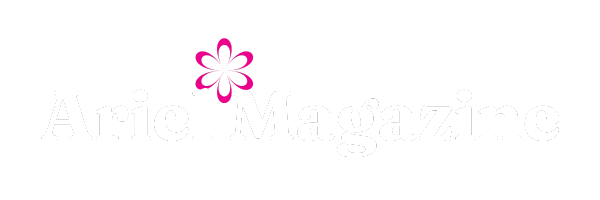Blog
A Holistic Guide to Spiritual Response Therapy (SRT)

Have you ever felt stuck, like invisible forces are holding you back from living your best life? Whether it’s a pattern of self-doubt, unresolved hurt, or repetitive challenges, many of us grapple with subconscious blocks that hinder our progress. Enter Spiritual Response Therapy (SRT), a powerful, alternative healing modality designed to identify and release these hidden obstacles.
Rooted in spiritual exploration and subconscious healing, SRT helps align energy and elevate overall well-being. This blog will explain SRT, how it works, its history, and the benefits it offers.
What Is Spiritual Response Therapy?
Spiritual Response Therapy (SRT) is a therapeutic framework that taps into the subconscious mind and the “soul records” to identify negative energies, limiting beliefs and suppressed emotions. Think of it as cleaning out decades of emotional and mental clutter that no longer serves you.
How does it work? Using tools like a pendulum and a series of guided charts, an SRT practitioner connects to your Higher Self (a more profound, spiritual dimension of consciousness) to uncover and clear hidden blocks. The ultimate aim is to achieve emotional clarity, enhance personal growth, and create space for new opportunities to unfold in your life.
Key Ingredients of SRT:
- Higher Self Connection: Practitioners connect with the soul’s higher guidance.
- Pendulum as a Tool: A pendulum provides clear “yes” or “no” answers during the session.
- Soul-Level Healing: SRT doesn’t just address surface-level issues. It dives deep into the spiritual and energetic layers of your being.
The History and Evolution of SRT
SRT was founded by Reverend Robert E. Detzler (1926–2013), a Unity Minister dedicated to integrating spiritual insights into practical healing. Notwithstanding, Dr. Clark Cameron first presented the idea in the early 1980s based on his observations of ideomotor responses (unconscious physical movements that reveal subconscious thoughts). Dr. Cameron introduced these practices to Reverend Detzler in 1985.
Building on these ideas, Rev. Detzler refined and expanded the methodology, ultimately creating a comprehensive system that combined spiritual insights with practical tools. By 1991, he established the Spiritual Response Association (SRA), which continues to train practitioners and promote the practice worldwide.
Over the decades, thousands of people have experienced Rev. Detzler’s teachings. The SRA remains a hub for knowledge-sharing, offering courses, certification programs, and a supportive community for practitioners and clients alike.
How Does SRT Work?
SRT relies on a combination of tools, processes, and spiritual guidance. A typical session follows this structure:
1. Preparation
The practitioner begins by entering a high-vibration state, often through meditation or intention-setting. This ensures a clear connection with their Higher Self and the client’s energy field.
2. Connecting with Higher Guidance
The spiritual foundation of SRT lies in connecting with the Higher Self, a guiding spiritual force believed to have access to profound wisdom. This connection is essential for identifying and addressing the root cause of a client’s issues.
3. Pendulum and Chart Work
A pendulum is the primary communication tool. Holding the pendulum over a series of charts, the practitioner asks guided questions to uncover subconscious patterns, blocks, or limitations. The pendulum movements (e.g., swinging in a specific direction) provide answers that guide the session.
4. Clearing Negative Energy
Once the source of the issue is identified, the practitioner uses focused intention and spiritual clearing techniques to release it. This process is often described as deeply relaxing and almost meditative for clients.
5. Integration and Reflection
After the session, clients often experience a sense of lightness or clarity. Practitioners may provide post-session guidance to help individuals integrate the healing into their everyday lives.
Benefits of Spiritual Response Therapy
SRT is a versatile tool that addresses many personal, emotional, and spiritual challenges. Here are a portion of its most striking advantages:
1. Releasing Emotional and Energetic Blocks
SRT identifies limiting beliefs, outdated thought patterns, and unresolved emotions stored deep within the subconscious. Clearing these blocks creates space for new opportunities and personal growth.
2. Stress and Anxiety Relief
Many clients find that SRT provides profound emotional relief, helping them feel calmer, more focused, and better equipped to handle life stressors.
3. Enhanced Self-Awareness
By tapping into your subconscious, SRT offers unique insights into your behaviours, reactions, and tendencies—empowering you to make more conscious decisions.
4. Deep Spiritual Growth
SRT helps individuals reconnect with their inner selves and their higher spiritual purpose. After sessions, many clients describe feeling more aligned with their values, goals, and life’s direction.
5. Improved Relationships
Clearing energetic blocks often releases lingering emotional baggage from past relationships, creating healthier dynamics in both personal and professional contexts.
6. Breaking Negative Patterns
From financial struggles to recurring relationship challenges, SRT uncovers the root causes of cyclical issues, paving the way for lasting change.
Is SRT Right for You?
If you’re someone who feels weighed down by unresolved emotions or struggles with repetitive life patterns, SRT might be worth exploring. This modality benefits individuals on a spiritual path or those open to alternative therapies.
It’s essential to approach SRT with curiosity and an open mind. While it’s not a replacement for traditional medical or mental health treatments, it can be a powerful complementary tool that aligns your spiritual, emotional, and mental well-being.
A Closer Look at SRT in Action
Personal Transformation
One of the most sought-after results of SRT is profound personal transformation. Whether breaking free from low-confidence dynamics or achieving clarity on life goals, SRT often provides solutions where traditional methods fall short.
Emotional Healing
Many people report feeling lighter, emotionally balanced, or more resilient after releasing stuck energy during SRT sessions.
Resolving Karmic Patterns
Have you noticed recurring negative patterns in your relationships or career? SRT can clear karmic imprints, helping clients build healthier connections and move forward without the weight of inherited patterns.
Practitioner Qualifications
Working with certified and experienced practitioners is essential for the safest and most effective outcomes.
Certification and Training
- Many reputable trainers offer certification programs or workshops for aspiring healers.
- Proper credentials ensure practitioners align with the high ethical standards of energy healing.
Advanced Training
Several SRT practitioners undergo extensive training in chakra alignment, dedicated spiritual counselling, or speciality healing techniques.
Ethical Factors
Responsible SRT practitioners emphasize informed consent, practice scope, and client confidentiality.
Tips for Finding an SRT Practitioner
Interested in experiencing SRT for yourself? Here are some tips to get started:
- Look for certified practitioners through the Spiritual Response Association (SRA) directory.
- Schedule a consultation to discuss your goals and see if the practitioner is a good fit.
- Come prepared with an open mind and a clear intention for what you hope to achieve during your session.
Final Thoughts: Stepping Into Your Full Potential
Spiritual Response Therapy is more than a healing tool. It’s a gateway to profoundly understanding yourself and creating meaningful life changes. By addressing the root causes of negative patterns, SRT empowers you to step into your full potential with clarity, confidence, and purpose.
If you’re ready to align your energy, clear away what no longer serves you, and open the door to transformative growth, SRT could be the key you’ve been searching for.
Take the first step on your spiritual healing journey today because freedom begins within.
Frequently Asked Questions About SRT
Q1: Who can benefit from SRT?
Anyone dealing with emotional, spiritual, or mental blockages can benefit from SRT. It is especially effective for people seeking clarity, inner peace, or purpose.
Q2: Do I need to believe in spirituality for SRT to work?
No! While deeply anchored in spiritual principles, this practice addresses subconscious programs that are universally relevant.
Q3: What tools are used during SRT?
A pendulum and energy charts are commonly used to access subconscious or higher levels of awareness. These tools act as bridges for communication in the process.
Q4: Can SRT replace traditional therapy?
SRT complements, but does not replace, traditional therapy or medical treatment. Always consult licensed professionals for ongoing mental or physical health concerns.
Q5: How many sessions do I need?
Every individual’s needs vary. Some people see significant results after one session, while others might require multiple sessions for more profound work.
